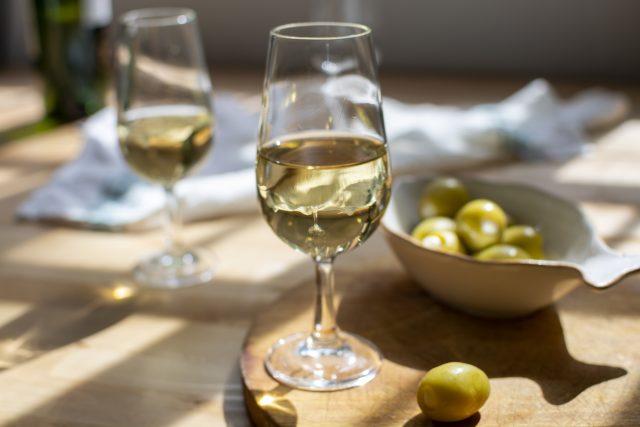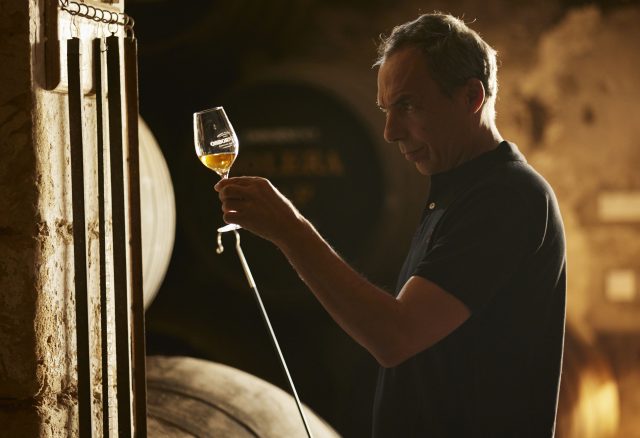This website uses cookies so that we can provide you with the best user experience possible. Cookie information is stored in your browser and performs functions such as recognising you when you return to our website and helping our team to understand which sections of the website you find most interesting and useful.
Could climate change spell doom for biologically aged Sherry?
A recent study from Universidad Politécnica de Madrid has suggested that certain styles of Sherry could be at risk due to rising temperatures.

The study, titled Impact of climate change on sustainable production of Sherry wine in nearly-zero energy buildings, was published in Journal of Cleaner Production earlier this year.
The key element it focuses on is flor, often known as the ‘veil of flor’, a layer of yeast (consisting of different strains of Saccharomyces cerevisiae) that gives Fino, Manzanilla, and, to a lesser extent, Amontillado and Palo Cortado Sherries distinct aromatic, textural and appearance characteristics.
With regards to the latter, the flor protects the wine from oxidation as it ages, resulting in a paler colour. The wine will also become lighter in body as the flor consumes alcohol and glycerol.

Perhaps the biggest giveaway that a wine has been aged under flor, or ‘biologically aged’ as it is also known, is on the nose. The flor produces acetaldehydes, which lend the very distinct bruised apple aroma that one associates with these styles of Sherry.
The study noted that the “Cathedral warehouses” of Jerez’s bodegas are an example of energy efficient structures that provide sufficient warmth and humidity for the flor to thrive without requiring additional heating.
However, as temperatures increase by around 0.2 °C per decade, conditions may become too hot for the flor fungus to thrive.
The study suggested: “The results show that, by the middle of this century, the average outdoor temperature will increase by 2.3 °C (in summer up to 3.6 °C). As a consequence, the temperature in the ageing zone would exceed the comfort limit for 19% of the year, (up to 34% in hot years). For 2080, the prediction is even worse (average value of 27%).”
In order to assess how these temperature increases would affect a Sherry winery, an energy simulation model of a building was developed based upon several years of data examining how temperatures outside a real winery affected conditions inside. The researchers then simulated conditions based on those that would result from climate change.
“As a result,” it explained, “the microorganisms responsible for this unique process could not maintain their activity. This fact will force the sector to face a harsh reconversion through the adoption of new mechanisms and strategies, which endangers the economic sustainability of an entire region dedicated to this practice.”
According to the Jerez-Xeres-Sherry Regulatory Council’s 2022 report, together Fino and Manzanilla constituted more than a third (16.9% and 26.2% respectively) of Sherry sales, indicating the commercial importance of biologically aged wines to the region.
Some of those working in the Sherry sector are already facing up to the challenge.
Speaking with the drinks business, Carlos Ferreiro, winemaker and head of Altanza vineyards in DOCa Rioja and DO Jerez, said: “I believe that this is a new challenge that we are going to face in future years. Wineries must adapt to accommodate their facilities and our winemaking processes, so we can help the veil of flor to develop each year and survive along the time. There are already several studies on this topic and possible solutions that technology offers to us, and I believe that if we do it responsibly, we will be able to maintain this unique style of wine from Jerez.”
Marcos Alguacil, oenologist at Grupo Osborne, explained to the drinks business that moisture in the air might be critical to preserving flor: “The exact location of the bodega is really important. Temperature and humidity are the key factors for the development of the yeasts and the veil of flor.”

“When the temperature is higher than 25ºC, the veil of flor could have difficulties growing normally. I think the closer to the Atlantic coast the bodega is, the less impact climate change will have on temperatures because of the buffering effect of the ocean. Our bodegas are located just 400-500 metres away from the Atlantic coast, and are well protected against the dry and warm levante winds, so we have not noticed changes in the veil of flor behaviour to date,” he concluded.

